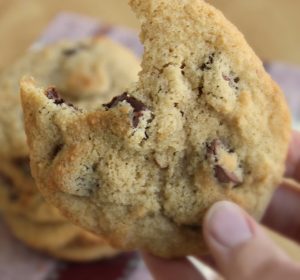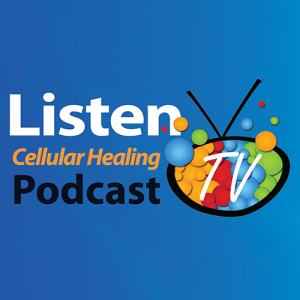When it comes to combating the obesity epidemic, the entire premise of treatment is incorrect. Modern medicine attempts to cure various ailments of today using an outdated approach:
In the 19th and 20th centuries, infectious diseases like cholera, smallpox and yellow fever were the major threats to people’s health. In order to combat these illnesses, antibiotics and penicillin were administered to needy patients. This was the beginning of the “one disease, one drug” treatment philosophy.
While giving someone a drug to cure them may have worked in the past, it is not as effective when dealing with diseases like obesity, heart disease, Type 2 diabetes, and others in the 21st century. These are dietary diseases, and the best form of treatment is getting to the root of the problem (R1). In other words, instead of looking for the latest drug, the best form of treatment is to fix cellular dysfunction and incorporate ancient healing strategies such as fasting.
The Real Cause of Obesity
According to the CDC, more than 34% or 78 million of U.S. adults are obese, with obesity being a major factor in diseases various diseases, including heart disease, stroke, Type 2 diabetes and some cancers.1 Worldwide, obesity rates have increased as well: A study led by Professor Emmanuela Gakidou of the Institute for Health Metrics and Evaluation at the University of Washington found that obesity among adults increased 27.5% while obesity rates for children and adolescents increased by 47.1%2
In today’s society, consuming too many calories is believed to be the cause of obesity. People are advised to eat a low fat, low calorie diet and replace healthy fats with man-made fats and artificial sweeteners to maintain a healthy weight. Ironically, counting calories and eating a low fat diet was unheard of 200 years ago, and obesity was practically nonexistent as well.
While many believe the inability to lose weight or sudden weight gain is due to an excessive amount of calories, that’s just a symptom of the problem. In order to fully understand weight gain, it’s important to get to the root causes:
Insulin. Insulin is a hormone made by the pancreas that allows the body to use sugar from the carbs in food for energy. It is also thought to be the major driver of obesity. If a person is insulin resistant, the cells in the body are resistant to insulin and are unable to use it effectively, which can lead to high blood sugar. The pancreas will then increase the production of insulin, which can lead to Type 2 diabetes.
When people are prescribed insulin, they may gain anywhere from ten to thirty pounds as an unwanted side effect. Doctors advise patients to lose weight to get their diabetes under control, but the insulin makes them gain weight. As a person continues to take insulin, their body begins to resist it even more, which in turn means they will have to take more and more over time. Similar reactions occur when a person takes alcohol, nicotine, marijuana, pain pills and other medications: if a person takes these drugs on a regular basis, they will have to gradually increase the dosage to get the same effect as when they first started taking the drug.
Their body is building a resistance or tolerance to the drug the same way a person will increase their resistance to insulin. The pancreas will produce less and less insulin, prompting a person to increase the amount of insulin they have to take, causing them to gain even more weight.
The current treatment of Type 2 diabetes focuses on lowering blood sugar by administering insulin, which just treats the symptom. In actuality, Type 2 diabetes is a disease of insulin resistance. Instead of making things better, this method of treatment causes the disease to get worse.
Calorie restriction. In today’s society, the widespread belief is calories cause weight gain, and if a person limits their calories, weight loss will occur. While a person may lose weight initially, it is estimated these diets have a nearly 98% failure rate. When a person attempts to cut calories, the following pattern tends to emerge:
- Individual loses 10 pounds. While they are happy with their results, they don’t realize this is mostly water weight and small amounts of fat or muscle.
- Hormonal metabolism starts to decrease. As a person cuts calories, their metabolism starts to decrease, matching their caloric intake. For example, if a person started out eating 2000 calories per day and reduced it to 1500, the body would simply reduce its caloric expenditure to 1500 calories.
- Weight loss begins to plateau at 6 months. According to Dr. Jason Fung in CHTV Episode 112, author of The Obesity Code, studies have repeatedly shown that weight loss begins to plateau approximately 6 months from the start of a diet.
- Weight gain resumes. Once the weight loss has reached a plateau, most people begin to gain weight.
- Individual attempts to cut calories further. Once weight gain is noticed, many people will double their efforts by cutting even more calories. This will result in a few additional pounds being shed.
- Weight loss reaches another plateau 2 to 3 months later. The weight loss is short-lived as the body adjusts again and weight gain resumes.
- Individual feels frustrated and resumes pre-diet eating habits. As the body reaches another plateau, a person may become demoralized and feel the reason they can’t keep the weight off is because they aren’t trying hard enough. As a result, they get frustrated and give up.
- Weight is slowly regained. Once they resume their old eating habits, the weight they lost comes back, oftentimes with additional weight gained.
Countless studies indicate these types of diets tend to fail over time:
- A study in the New England Journal of Medicine studied 811 overweight adults, placing them into four groups, each following various calorie restricted diets. The calorie restriction diets worked initially, but by the second year, the majority of participants were eating more calories than the plan allowed. By the third year, the majority of participants in each group regained all the weight they originally lost.3
- UCLA researchers conclude that a person may lose 5 to 10 percent of weight via calorie restricted diets, but the majority of the weight comes back. According to Traci Mann, UCLA Associate professor of psychology: “We found that the majority of people regained all the weight, plus more. Sustained weight loss was found only in a small minority of participants, while complete weight regain was found in the majority. Diets do not lead to sustained weight loss or health benefits for the majority of people.”4
- Leptin: the hunger hormone. Another cause of obesity is leptin, the hunger hormone. Leptin is produced by fat cells and released into the bloodstream as you eat. When working properly, leptin tells the brain you’re full and to stop eating, but overweight people can produce too much leptin. As a result, the brain is tricked into thinking it is still hungry even after eating meals.
Weight loss resistance is not a calorie problem as we’ve been led to believe. Once a person understands that the issues described above are hormonal, they can begin to look for ways to decrease the resistance to insulin, NOT cut calories. And one of the most effective ways to lower insulin is by fasting.
The History of Fasting
Fasting has been used since ancient times for a variety of reasons, ranging from improved physical health, mourning, spiritual vision, to prevent or break the habits of gluttony, and purification of the body and mind. In other instances, fasting was simply a way of life. Previous generations did not have access to food as easily as current generations and often didn’t have the option of eating. Food was gathered by hunting, and that meant possibly eating just once or twice per day.
While modern medicine hasn’t embraced fasting as a viable health option (yet), the practice has been around since the beginning of time. Fasting is known to rejuvenate and revitalize the body. Even animals will fast when they are stressed, ill or feel unease. The refusal to eat is a form of self-preservation to remove waste products and promote healing of the body.
Hippocrates, Plato, Socrates, Galen and Aristotle all praised the benefits of fasting. Paracelsus, one of the original fathers of Western medicine once said “fasting is the greatest remedy–the physician within.”5 The ancient Egyptians also understood how excessive eating causes disease. An Egyptian pyramid has the inscription “humans live on one quarter of what they eat; on the other three-quarters lives their doctor.”6
The following religious and spiritual groups use fasting as part of their practices:
Buddhism. In Buddhism, fasting is considered essential for discipline and self-control.5
Christianity. Both old and new testaments in the Bible mention fasting, and notes it’s not “if” we fast, but “when” we fast:
“And when you fast, do not look gloomy like the hypocrites, for they disfigure their faces that their fasting may be seen by others. Truly, I say to you, they have received their reward. But when you fast, anoint your head and wash your face, that your fasting may not be seen by others but by your Father who is in secret. And your Father who sees in secret will reward you.” Matthew 6:16-18
Hinduism. Ancient Hinduism tradition calls for fasting once a week, consuming only water until the afternoon.7
Islam. Islam calls for fasting during the entire month of Ramadan before the break of dawn until sunset.8
Judaism. Yom Kipper and Tisha B’Av are two major fasts of Judaism. Fasting is designed to help reflect on human frailty.
Native American Indians. Fasting was described by a Cherokee priest as “a means to spiritualize the human nature and quicken the spiritual vision by abstinence from earthly food.9
Health Benefits of Fasting
Today, the philosophy on eating is the polar opposite of the ancient practice of fasting: We have gone from an average of eating three meals a (day, breakfast, lunch and dinner) to eating five to six meals a day: breakfast, a snack, lunch, snack, dinner, and another snack. A recent study showed more than half of the adults eat for 15 hours or longer every day!1
The basic food pyramid suggests eating bread, refined grains such as pasta and a minimal amount of fat. For some, “snacks” may consist of cookies, donuts and other sugary, processed foods. This type of eating clearly increases risk of developing insulin resistance and Type 2 diabetes.
Fasting will help eliminate these problems and has many other health benefits as well:
Decreased risk of diabetes. Many studies show fasting helps reduce Type 2 diabetes.
- In 2014, Medical News Today reported a study that suggests fasting on water one day a week reduced the risk of diabetes among people high at risk.10
- A scientific review in the British Journal of Diabetes and vascular Disease suggests fasting diets may help those with diabetes, cardiovascular disease, and weight loss. The study concludes that fasting bodies change how it selects which fuel to burn, which leads to an improved metabolism and reduced oxidative stress.11
Decreased inflammation. Chronic inflammation (R4) can be the result of poor lifestyle choices. Too much sugar, processed food and gut issues can cause chronic inflammation. Studies show intermittent fasting helps alleviate these symptoms:
- Researchers at the Yale School of Medicine describe how the body produces the compound β-hydroxybutyrate (BHB) when fasting, doing high intensity exercise (burst training) or on a low carbohydrate, ketogenic diet. BHB inhibits the production of of NLRP3, a set of proteins called inflammasome. Inflammasome is the catalyst for many auto inflammatory disorders and diseases such as Alzheimer’s, atherosclerosis, and Type 2 diabetes. 12
- Two separate studies on Ramadan fasting found that individuals who fasted had noticeable reductions in the inflammation markers interleukin-6, C-reactive protein and homocysteine.13
Fasting and aging. Vegetable oils, margarine, white bread and processed foods can cause premature aging. Many studies support claims that fasting can help slow aging:
- A study conducted by Dr. Valter Longo at the University of California conducted fasting tests on mice and discovered that they had less fat around their organs, greater bone density at old age, and increased nerve cell development compared to non-fasting mice.14
- Fasting increases the effect of autophagy, which allows cells to remove waste products and old cell components from the body. Eating glucose and insulin can decrease the effectiveness of autophagy.
Fasting and human growth hormone (HGH). HGH is a hormone that’s produced by the anterior pituitary gland that promotes growth in humans.
- A study at the Intermountain Medical Center Heart Institute found that men who fasted 24 hours had a 2000% increase in circulating HGH and women had a 1300% increase.15
Improved cardiovascular health. Studies indicate intermittent fasting can lead to decreased cholesterol levels:
- Intermountain Medical Center Heart studies on intermittent fasting found that fasting individuals significantly reduced their triglycerides, boosted their LDL cholesterol and stabilized blood sugar.15
Fasting energy sources. Unlike chronic calorie reduction where a person’s metabolism slows down, a person becomes more energetic because the body switches its energy source from using glucose, which is stored in the liver to using the body’s own fat for fuel. The result is MORE energy, a revved up metabolism, and a higher resting metabolic rate. By using fat for energy, the muscles are preserved, and weight loss begins.
Fasting Tips
Fasting may be challenging in the beginning, especially if a person is used to eating many times per day. Here are some tips to make the transition to fasting as part of your lifestyle easier:
- Be prepared for food withdrawals. Many processed foods and drinks are addictive so a person may experience withdrawal symptoms as they eliminate them from their diet. Instead of giving up, keep going! A person would not give up if they fell off a bike the first few times, or couldn’t play the piano after one or two lessons. The same rationale applies to fasting. In time cravings and withdrawals will subside.
- Drink pure water. Water flushes out toxins and keeps a person energized and well hydrated. (dehydration can cause a person to feel tired and hungry.) Aim for eight-8 ounce glasses of water daily, but listen to your thirst too.
- Don’t overexert. While fasting, keep strenuous exercise to a minimum. Removing toxins, and repairing damaged cells is a workout for your body. Getting plenty of rest is critical as the body restores.
- Be prepared for potential side effects. When the body releases toxins, a person may experience the following symptoms:
- Fatigue
- Nausea
- Vomiting
- Diarrhea
- Headaches
- Lack of focus
- Bad breath
- Lethargy
- Joint pain
- Minor depression
- These side effects are common as the body eliminates various toxins. Drinking water helps to alleviate some side effects and remove toxins faster.
- Be prepared. Being mentally and physically prepared is essential. Remind yourself why you’re fasting, and make sure you have the supplies you need readily available for the fast. For example, if doing a bone broth fast, ensure you have all the ingredients needed and have the broth ready to go before you begin.
- Try intermittent fasting (IF). Intermittent fasting is simply skipping meals or eating fewer calories for an average of fourteen to thirty hours at a time. A sample intermittent fast would be the following:
- Eating dinner a few hours before bedtime (6-8PM)
- Sleeping 7-9 hours
- Skipping breakfast and drinking water (or organic coffee/tea with health fat like MCT oil)
- Eating a late lunch (2-3PM)
- In this example, a person can easily go 14-18 hours without eating. If waiting until dinner, one may go 24 hours between meals. Some people prefer to intermittent fast daily, myself included.
- Plan meals wisely. Unlike calorie restriction diets, fasting allows a person to eat until full. This conditions the body to know food is coming soon and to not go into starvation mode. The key is to enjoy healthy, nutritious meals when food is eventually eaten. Avoiding sugar, processed and fast foods is essential to reaping the benefits of a fast.
- Focus on the long term. It may take time to reap the benefits of fasting. Make fasting a part of your life, not a one-time event. Illness and weight gain doesn’t happen overnight, and that same rationale applies to reaping the benefits of fasting. Patience and dedication is key.
- Break the fast carefully. When coming off a fast, slowly incorporate cellular healing foods back into the diet one at a time, like bone broth, poached eggs, and blended soups and smoothies. The body (especially the digestive tract) is extra sensitive after a fast, which makes it an ideal time to determine which foods a person may be allergic to. Depending on the length of the fast, it may take several days for the body to adjust.
As a person gets accustomed to fasting, the body gest more and more efficient with every subsequent fast. Fasting on a consistent basis can help restore many of the ailments in today’s society. Cells become more efficient at utilizing fat, which burns cleaner than glucose. Brain fog dissipates, weight loss is easier, and most hormonal problems such as those dealing with the thyroid and diabetes may be eliminated.
Conventional medicine has many benefits for acute health care, but fasting may offer one of the answers to many of today’s chronic inflammatory health problems.
- Heart Disease
- Diabetes: The Unspoken Solution
- R1: Removing the Source
- Intermittent Fasting – A Top 5 Strategy to Create Your Best Health Ever
- CHTV Episode 112: How to Intermittent Fast with Dr. Jason Fung
- Healthy Fats – The Fat that Makes You Skinny
- Is Weight Loss Resistance Your Story?
- Controlling Blood Glucose – Top 5 Strategies for Your Best Health Ever
- Heart Disease
- R4: Reducing Cellular Inflammation and Oxidative Stress
- Ground Zero: How to Heal Your Leaky Gut
- Burst Training – A Top 5 Strategy to Create Your Best Health Ever
- The Ketogenic Diet: An Answer for More than Weight Loss Resistance
- Baby Boomers, Alzheimer's, Dementia and Nutrition
- Dr. Pompa's Top 10 Toxic Foods
- The Anti-Aging Lifestyle Commandments
- Dr. Pompa's Top Sleep and Anxiety Strategies
- Bone Broth for Weight Loss
- Bone Broth Fast and Bone Stock Recipe
- Smoothie Recipes
- Why Your Brain Quits Working
- Could Your Thyroid Be Why You Are Still Not Feeling Well?
- “Adult Obesity Facts.” Centers for Disease Control and Prevention. http://www.cdc.gov/obesity/data/adult.html.
- Ng, Marie et al. “Global, regional, and national prevalence of overweight and obesity in children and adults during 1980–2013: a systematic analysis for the Global Burden of Disease Study 2013.” The Lancet 384, no. 9945 (2014): 766 – 781. http://www.thelancet.com/journals/lancet/article/PIIS0140-6736(14)60460-8/fulltext.
- Mozaffarian, Dariush, Tao Hao, Eric B. Rimm, Walter C. Willett, and Frank B. Hu. “Changes in Diet and Lifestyle and Long-Term Weight Gain in Women and Men.” New England Journal of Medicine 364, no. 25 (June 23, 2011): 2392-404. doi:10.1056/nejmoa1014296. http://www.nejm.org/doi/full/10.1056/NEJMoa1014296?query=TOC#t=articleTop.
- Mann, Traci, A. Janet Tomiyama, Erika Westling, Ann-Marie Lew, Barbra Samuels, and Jason Chatman. “Medicare's Search for Effective Obesity Treatments: Diets Are Not the Answer.” American Psychologist 62, no. 3 (April 2007): 220-33. doi:10.1037/0003-066x.62.3.220. http://psycnet.apa.org/journals/amp/62/3/220/.
- “History of Fasting.” All About Fasting: For Health and Healing. http://www.allaboutfasting.com/history-of-fasting.html.
- “Fasting for Health.” http://www.geocities.co.jp/Beautycare-Venus/2032/english/paper.html.
- “Fasting in Hinduism.” Hinduism Facts | Facts about Hindu Religion. http://hinduismfacts.org/fasting-in-hinduism/.
- El-Ashi, Arafat. “Fasting in Islam.” Islamic Society of Rutgers University. http://www.eden.rutgers.edu/~muslims/fasting.htm.
- “Native American Fasting.” Access Geneaology: A Free Genealogy Resource. https://www.accessgenealogy.com/native/native-american-fasting.htm.
- Whiteman, Honor. “Fasting: Health Benefits and Risks.” Medical News Today: Health News. July, 2015. http://www.medicalnewstoday.com/articles/295914.php
- Brown, J. E., M. Mosley, and S. Aldred. “Intermittent Fasting: A Dietary Intervention for Prevention of Diabetes and Cardiovascular Disease?” The British Journal of Diabetes & Vascular Disease 13, no. 2 (March 1, 2013): 68–72. doi:10.1177/1474651413486496. http://dvd.sagepub.com/content/13/2/68.full.pdf+html.
- Youm, Yun-Hee, Kim Y Nguyen, Ryan W Grant, Emily L Goldberg, Monica Bodogai, Dongin Kim, Dominic D’Agostino, et al. “The Ketone Metabolite β-Hydroxybutyrate Blocks NLRP3 Inflammasome–mediated Inflammatory Disease.” Nature Medicine 21, no. 3 (February 16, 2015): 263–69. doi:10.1038/nm.3804.
- Aksungar, Fehime B., Aynur E. Topkaya, and Mahmut Akyildiz. “Interleukin-6, C-Reactive Protein and Biochemical Parameters During Prolonged Intermittent Fasting.” Annals of Nutrition and Metabolism 51, no. 1 (March 19, 2007): 88–95. doi:10.1159/000100954. https://www.ncbi.nlm.nih.gov/pubmed/17374948.
- Brandhorst, Sebastian, In Young Choi, Min Wei, Chia Wei Cheng, Sargis Sedrakyan, Gerardo Navarrete, Louis Dubeau, et al. “A Periodic Diet That Mimics Fasting Promotes Multi-System Regeneration, Enhanced Cognitive Performance, and Healthspan.” Cell Metabolism: Clinical and Translational Report 22, no. 1 (July 2015): 86–99. doi:10.1016/j.cmet.2015.05.012. http://www.cell.com/cell-metabolism/pdfExtended/S1550-4131(15)00224-7
- Intermountain Medical Center. “Routine periodic fasting is good for your health, and your heart, study suggests.” ScienceDaily. www.sciencedaily.com/releases/2011/04/110403090259.htm.











